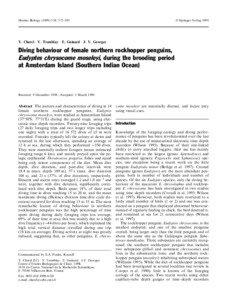<--- Back to Details
| First Page | Document Content | |
|---|---|---|
 Date: 2006-12-05 23:22:14Neognathae Ornithology Macaroni Penguin Rockhopper penguin Crested penguin Diving Deep diving Flightless birds Penguins Fauna of South America |
| First Page | Document Content | |
|---|---|---|
 Date: 2006-12-05 23:22:14Neognathae Ornithology Macaroni Penguin Rockhopper penguin Crested penguin Diving Deep diving Flightless birds Penguins Fauna of South America |